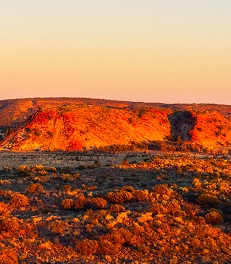Hot times in dry climes to tax soil health
 Increasingly parched conditions caused by global warming will make the world’s drylands less productive, by reducing the balance of nutrients in the soil.
Increasingly parched conditions caused by global warming will make the world’s drylands less productive, by reducing the balance of nutrients in the soil.
That is the prediction of a ground-breaking study from the University of New South Wales, after a global collaboration of scientists undertook the same test across 224 dryland sites in 16 countries on every continent except Antarctica.
UNSW’s Adjunct Professor David Eldridge studied woodland sites in NSW near Mildura. At the same time, areas of the Negev Desert in Israel, the Pampas lowlands in Argentina, the Altiplano highlands of Peru and dozens more sites were polled. Rainfall at the sites ranged from 100 to 800 mm per year, and all soil samples were analysed in the same Spanish laboratory.
Increasing aridity has been linked to a reduction in carbon and nitrogen in the soil and an increase in phosphorus, the newly-published study says.
“Drylands cover about 41 per cent of Earth’s land surface and support more than 38 per cent of the world’s population,” says Professor Eldridge, who also works for the NSW Office of Environment & Heritage.
“As the world’s population grows, people will increasingly rely on marginal lands – particularly drylands - for production of food, wood and biofuels. But these ecosystems will be severely affected by imbalances in the cycle of carbon, nitrogen and phosphorus.”
Natural weathering releases phosphorus in rocks and sediments into the soil, the level of which will increase as soils become drier and erode more. Worldwide, soil moisture is predicted to decrease by 5 to 15 per cent by the period 2080-2099.
More phosphorus in the soil will coincide with less carbon and nitrogen, which depend more on biological processes such as litter decomposition, photosynthesis and nitrogen fixation. The effect will be compounded by the reduction in plant cover.
“Plants need all of these elements, in the correct amounts and at the right times, but increasing aridity will upset this balance, leading to a breakdown in essential soil processes,” says Professor Eldridge.
More details are available in the report published by the journal Nature.








 Print
Print